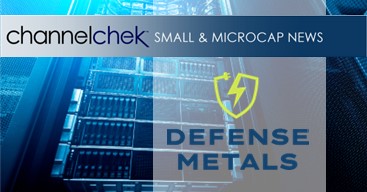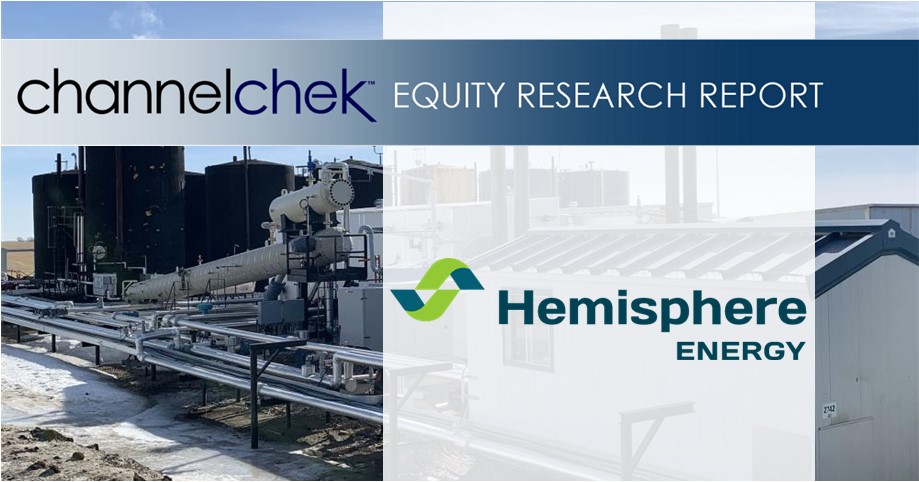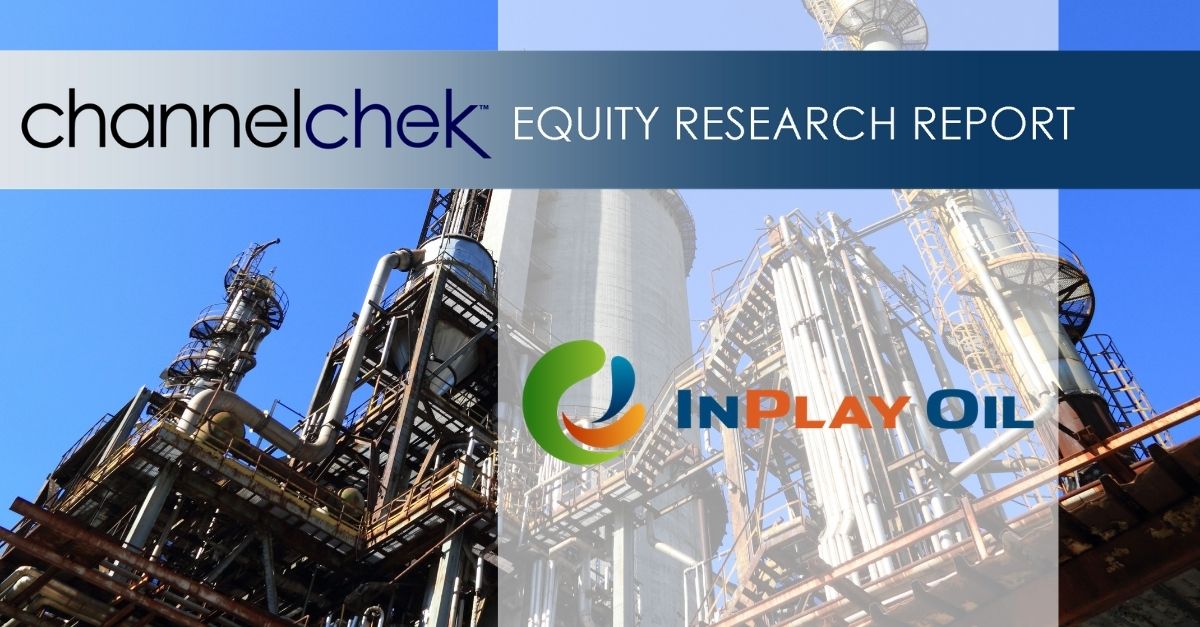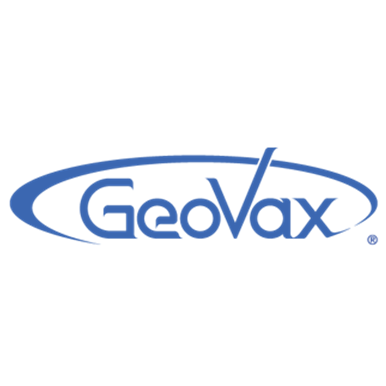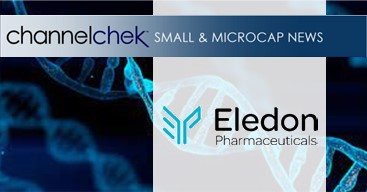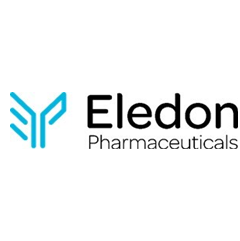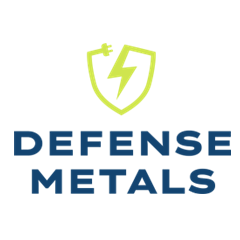
Research News and Market Data on DFMTF
09 Jan, 2024, 05:00 ET
Vancouver, BC, Jan. 9, 2024 /CNW/ – Defense Metals Corp. (“Defense Metals” or the “Company“; (TSXV: DEFN) (OTCQB: DFMTF) (FSE: 35D) is pleased to announce the Q4-2023 execution of a non-binding Memorandum of Understanding (“MOU“) with Ucore Rare Metals Inc. (TSXV: UCU) (“Ucore“) to explore collaborative opportunities as both companies move towards their respective commercialization efforts for a North American rare earth element (“REE“) supply chain. As one of the first projects under this MOU, Defense Metals will ship a mixed rare earth carbonate sample from its Wicheeda REE project to Ucore’s Kingston, Ontario, RapidSX™ Commercialization and Demonstration Facility (“CDF“).
SGS Canada Inc. in Lakefield, Ontario, will ship the sample to Ucore’s CDF on behalf of Defense Metals. This sample was generated during 2023 hydrometallurgical piloting test work performed on concentrate produced by earlier flotation pilot plant testing of a 26-tonne bulk sample from Defense Metals’ wholly-owned Wicheeda REE project in British Columbia.
Craig Taylor, CEO of Defense Metals, commented:
“We expect to ship a mixed rare earth carbonate sample in the next few weeks to Ucore’s demonstration plant for testing. The Wicheeda project is being developed as a viable source of REE from North America and as more processing and separation facilities become operational in the future, the demand for REE feedstock will be increasingly important. This MOU with Ucore is a further step in that direction to be part of the Western world’s REE supply chain.”
Pat Ryan, P.Eng., Chairman and CEO of Ucore, stated:
“The opportunity to align closer with Defense Metals is strategically important. The MOU lays out the framework wherein Defense Metals’ technically strong and readily accessible North American REE resource can be further processed and refined using Ucore’s Canadian-founded technology, RapidSX™. Receiving the sample mixed rare earth carbonate at our Kingston CDF will start the process of determining what may be possible between the companies as we collectively look to fuel the 21st-century energy transition.”
Qualified Person
The scientific and technical information contained in this news release as it relates to the Wicheeda REE Project has been reviewed and approved by Kristopher J. Raffle, P.Geo. (B.C.), Principal and Consultant of APEX Geoscience Ltd. of Edmonton, Alberta, and a consultant to the Company, who is a “Qualified Person” as defined in National Instrument 43-101 – Standards of Disclosure for Mineral Projects.
About the Wicheeda Rare Earth Element Project
Defense Metals’ 100% owned, 8,301-hectare (~20,534-acre) Wicheeda REE Project is located approximately 80 km northeast of the city of Prince George, British Columbia; population 77,000. Wicheeda is readily accessible by all-weather gravel roads and is near infrastructure, including hydro power transmission lines and gas pipelines. The nearby Canadian National Railway and major highways allow easy access to the port facilities at Prince Rupert, the closest major North American port to Asia.
About Defense Metals Corp.
Defense Metals Corp. is a mineral exploration and development company focused on the development of its 100% owned Wicheeda Rare Earth Element Deposit located near Prince George, British Columbia, Canada. Defense Metals Corp. trades on the TSX Venture Exchange under the symbol “DEFN”, in the United States, trading symbol “DFMTF” on the OTCQB and in Germany on the Frankfurt Exchange under “35D”.
Defense Metals is a proud member of Discovery Group. For more information please visit: http://www.discoverygroup.ca/
For further information, please visit www.defensemetals.com or contact:
Todd Hanas, Bluesky Corporate Communications Ltd.
Vice President, Investor Relations
Tel: (778) 994 8072
Email: todd@blueskycorp.ca
Neither the TSX Venture Exchange nor its Regulation Services Provider (as that term is defined in the policies of the TSX Venture Exchange) accepts responsibility for the adequacy or accuracy of this news release.
Cautionary Statement Regarding “Forward-Looking” Information
This news release contains “forward–looking information or statements” within the meaning of applicable securities laws, which may include, without limitation, statements relating to advancing the Wicheeda REE Project, the expected shipment of the sample to Ucore and the expected timeline, the potential collaboration with Ucore, the technical, financial and business prospects of the Company, its project and other matters. All statements in this news release, other than statements of historical facts, that address events or developments that the Company expects to occur, are forward-looking statements. Although the Company believes the expectations expressed in such forward-looking statements are based on reasonable assumptions, such statements are not guarantees of future performance and actual results may differ materially from those in the forward-looking statements. Such statements and information are based on numerous assumptions regarding present and future business strategies and the environment in which the Company will operate in the future, including the price of rare earth elements, the anticipated costs and expenditures, accuracy of assay results, performance of available laboratory and other related services, future operating costs, interpretation of geological, engineering and metallurgical data, the ability to achieve its goals, that general business and economic conditions will not change in a material adverse manner, that financing will be available if and when needed and on reasonable terms. Such forward-looking information reflects the Company’s views with respect to future events and is subject to risks, uncertainties and assumptions, including the risks and uncertainties relating to the interpretation of exploration, engineering and metallurgical results, risks related to the inherent uncertainty of exploration, metallurgy and development and cost estimates, the potential for unexpected costs and expenses and those other risks filed under the Company’s profile on SEDAR+ at www.sedarplus.ca. While such estimates and assumptions are considered reasonable by the management of the Company, they are inherently subject to significant business, economic, competitive and regulatory uncertainties and risks. Factors that could cause actual results to differ materially from those in forward looking statements include, but are not limited to, continued availability of capital and financing and general economic, market or business conditions, adverse weather and climate conditions, failure to maintain or obtain all necessary government permits, approvals and authorizations, failure to maintain community acceptance (including First Nations), risks relating to unanticipated operational difficulties (including failure of equipment or processes to operate in accordance with specifications or expectations, cost escalation, unavailability of personnel, materials and equipment, government action or delays in the receipt of government approvals, industrial disturbances or other job action, and unanticipated events related to health, safety and environmental matters), risks relating to inaccurate geological, metallurgical and engineering assumptions, decrease in the price of rare earth elements, the impact of Covid-19 or other viruses and diseases on the Company’s ability to operate, the price of commodities, capital market conditions, restriction on labour and international travel and supply chains, loss of key employees, consultants, or directors, increase in costs, delayed results, litigation, and failure of counterparties to perform their contractual obligations. The Company does not undertake to update forward–looking statements or forward-looking information, except as required by law.
All information in this news release concerning Ucore has been provided for inclusion herein by Ucore. Although the Company has no knowledge that would indicate that any information contained herein concerning Ucore is untrue or incomplete, the Company assumes no responsibility for the accuracy or completeness of any such information.
SOURCE Defense Metals Corp.
